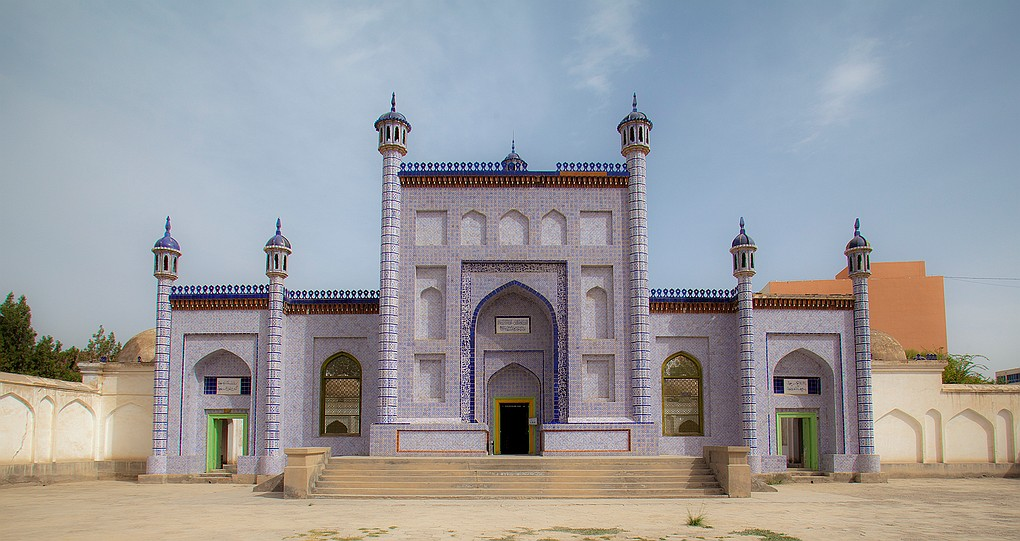Sachiye Madrasa: A Beacon of Knowledge
Sachiye Madrasa: A Beacon of Knowledge
M T Zunun
Introduction
The Sachiye Madrasa, located in the historic city
of Kashgar, was one of the most prestigious educational institutions from the
Qarakhanid period. Founded during the reign of Satuq (Abdukirim) Arslan Bughra
Qarakhan, this madrasa played a pivotal role in fostering cultural and
intellectual advancements. The term "saç" in ancient Uyghur signifies
the spread and dissemination of knowledge and science, encapsulating the
essence of the madrasa's mission.
Historical Significance
Established in the 10th century, the Sachiye
Madrasa was a highly regarded centre of higher education, attracting students
from diverse backgrounds. The curriculum included Islamic philosophy, history,
literature, astronomy, medicine, military science, and various natural and
social sciences.
Location
The Sachiye Madrasa in Kashgar city is located at
the head of Chasa Street, by the Tuman River to the east and
the "Id Kah Mosque" and "Orda Aldi" wholesale market to the
west. In the early 2000s, the madrasa comprised 14 rooms constructed as
warehouses for traders in the "Orda Aldi" wholesale market.
Notable Alumni
The madrasa boasts a distinguished lineage of
scholars, writers, poets, and philosophers who have made significant
contributions to their respective fields:
- Mahmud of
Kashgar (1008-1105): Noted for his seminal work "Diwan
Lughat al-Turk," Mahmud studied and taught at the Sachiye Madrasa.
- Yusuf
Khass Hajib: Author of "Kutadgu Bilig," one
of the most celebrated works of Uyghur literature, whose intellectual
foundation was shaped at the Sachiye Madrasa.
- Sadiqiy
(Muhammad Sadiq Kashgari): A prolific writer and historian who
studied at the Sachiye Madrasa, contributing extensively to Uyghur
literature through works such as "Tazkirah-i Azizān" and
"Adab us-Salihin."
- Gumnam
(Muhammad Emin Khojamkuli Hirqati):
Renowned for his poetic and philosophical insights, Gumnam's early
education at the Sachiye Madrasa profoundly influenced his literary
career.
- Jamal
Qarshi: A historian and scholar known for his
translations and original works conducted from the library of the Sachiye
Madrasa.
Architectural and Cultural Heritage
Despite its recent repurposing as warehouses
for the "Orda Aldi" market, the Sachiye Madrasa remains a testament
to Kashgar's architectural and cultural heritage. Under the administration of
the Chasa Street Authority, its historical significance continues to resonate.
Conclusion
The Sachiye Madrasa poignantly reminds us of the rich educational and cultural legacy of the Qarakhanid era. Its
illustrious alums exemplify the depth of Uyghur scholarship and intellectual
pursuit, inspiring generations with their enduring contributions.
For further exploration, readers can delve into
comprehensive historical accounts such as those by Haji Nurhaji and others,
which detail the profound impact of the Qarakhanids on education and culture.
References
- Haji
Nurhaji: "A Brief History of the Qarakhanids," Xinjiang People's
Publishing House, 1983 Urumchi.
- Ugdelmix:
"ساچىيە مەدرىسىنىڭ ھازىرقى ھالىتى
(The current state of the Sachiye Madrasa)," accessed 22 June 2019.
Uyghur Archive.
- Jamal
Qarshi: Notable works include translations such as "As-Sahh
fil-Lughat" and his dictionary "Mulhaqat as-Surah," conducted at the Sachiye Madrasa.
- Mahmud of
Kashgar: Renowned for "Diwan Lughat it-Turk" and his educational
background at the Sachiye Madrasa.
- Yusuf
Khass Hajib: Author of "Kutadgu Bilig," educated at the Sachiye
Madrasa.
- Sadiqiy
(Muhammad Sadiq Kashgari): Notable works include "Tazkirah-i
Azizān," "Adab us-Salihin," "Zubdat ul-Masail,"
"Tazkirah-i Ashab ul-Kahf," "Tarikh-i Iskandariya wa
Tajnama-i Shah," and "Risalah-i Kasibdar."
- Gumnam
(Muhammad Emin Khojamkuli Hirqati): His epic
"Muhabbatnama-Mihnatkame" and lyrical works under the pen names
"Hirqati" and "Gumnam."
These references offer a comprehensive overview
of the historical and educational significance of the Sachiye Madrasa,
highlighting its pivotal role in advancing intellectual pursuits and cultural
heritage.
Note
The last known pictures of the Sachiye Madrasa
were taken in the 1990s. Unfortunately, its recent fate and current condition
remain unknown. Despite this uncertainty, the madrasa holds significant
historical and cultural value as a beacon of knowledge and learning in Kashgar.




Comments
Post a Comment